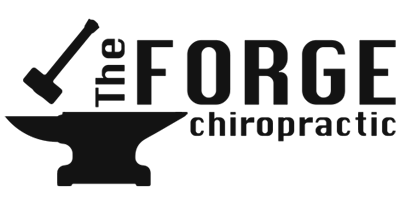Understanding and Managing Neck Pain: Solutions at The Forge Chiropractic in Baldwin WI

Neck pain in Baldwin WI is an incredibly common issue, with most people experiencing it at some point in their lives. Your cervical spine (neck), much like your shoulder, is designed for a wide range of motion, which inherently means it has less bony stability compared to other spinal regions. This makes it susceptible to various stresses and injuries affecting its supporting soft tissues, discs, joints, and nerves.
At The Forge Chiropractic in Baldwin, Wisconsin, we understand that neck pain can range from a minor annoyance to a debilitating condition. We are dedicated to accurately diagnosing the source of your neck pain and providing effective, personalized care to help you find relief and restore function.
Understanding Common Causes of Neck Pain in Baldwin WI
Neck pain can arise from several different structures and conditions. Here are some common culprits:
Cervical Sprains and Strains (Musculoligamentous Injuries):
- Your neck's ligaments act as "static stabilizers," limiting excessive end-range motion. A sprain occurs when these ligaments (like those connecting vertebrae or within the facet joint capsules) are stretched or torn by forces moving the neck beyond its normal limits.
- Muscles around the neck (e.g., SCM, trapezius, levator scapulae, scalenes, paraspinals) act as "dynamic stabilizers," protecting and controlling neck movement. A strain happens when these muscles are overstretched or forcefully contracted, often during an unexpected movement or sustained exertion, leading to muscle fiber damage. These injuries frequently occur together.
Cervical Disc Lesions:
- The discs between your cervical vertebrae act as shock absorbers and allow movement. A "disc lesion" involves disruption of the disc's tough outer annular fibers, potentially allowing the inner gel-like nucleus to bulge (protrusion), push through (extrusion), or even detach (sequestration).
- This can cause pain through an inflammatory "chemical radiculopathy" (nerve root irritation from inflammation) or "mechanical radiculopathy" (nerve root compression from the displaced disc material). Symptoms can include neck pain, as well as pain, tingling, numbness, or weakness radiating into the shoulder, arm, or hand. Disc lesions often develop gradually as part of a degenerative continuum or from repetitive stress, rather than a single event. The C5-6 and C6-7 levels are most commonly affected.
Cervical Spine Stenosis (Degenerative):
- This condition involves a narrowing of the central spinal canal (where the spinal cord runs) or the neural foramina (the openings where nerve roots exit the spine). While it can be congenital (present from birth), it most often develops due to age-related degenerative changes.
- As discs thin with age, ligaments can buckle, and bone spurs (osteophytes) can form around the vertebrae and facet joints in response to increased stress. This bony and soft tissue overgrowth can gradually encroach upon the space available for the spinal cord and nerve roots, leading to compression and symptoms like pain, numbness, tingling, or weakness in the neck, shoulders, arms, or hands. In more severe cases affecting the spinal cord, it can cause myelopathy with broader neurological issues. Stenosis affects almost 5% of adults, with prevalence increasing with age.
Thoracic Outlet Syndrome (TOS) - Cervical Contributions:
- TOS involves compression or irritation of the nerves (brachial plexus) and/or blood vessels that pass through the thoracic outlet (the space between your collarbone, first rib, and neck/chest muscles). While some forms are vascular (rare and serious), the most common type is Neurogenic TOS (over 95% of cases), affecting the nerves.
- Neck-related factors are significant contributors. Compression can occur between the anterior and middle scalene muscles in the neck, or between the first rib and clavicle, sometimes related to the presence of a cervical rib (an extra rib). Furthermore, sustained or repetitive work and daily activities (such as prolonged computer use, assembly line work, or overhead tasks) can lead to patterns of muscle tension and adaptive changes in the tissues around the neck, chest, and shoulders. These adaptive responses can effectively impair the movement through the passages of the thoracic outlet, potentially leading to irritation or compression of the nerves passing through. Symptoms often include pain, tingling, numbness, or weakness in the arm, shoulder, neck, or hand.
How Do These Neck Injuries and Conditions Develop?
Neck problems can arise suddenly or develop gradually over time:
- Acute Onset (Often Sprains/Strains, sometimes Disc Lesions):
-
- Whiplash Injuries: The leading cause of acute cervical sprains/strains, commonly from auto accidents. Over one million US adults suffer whiplash injuries annually.
- Sporting Accidents: Common in contact sports (football, hockey, wrestling) or high-speed activities (skiing), often from blows to the head or forceful neck movements.
- Activities of Daily Living: Sudden forceful movements like falls, or from pushing, pulling, or moving heavy objects.
- Cumulative Overload / Gradual Onset (Common for Sprains/Strains, Disc Lesions, Stenosis, TOS):
-
- Prolonged Static Postures: Workstation ergonomics (e.g., "tech neck" from computer/phone use), or holding the head in one position for extended periods.
- Repetitive Movements: Certain job tasks or hobbies involving repeated neck motions.
- Overhead Activity: Can strain neck and shoulder girdle muscles.
- Other Factors: Sedentary lifestyles and obesity.
Factors That Can Increase Your Risk for Neck Pain
Several factors can predispose you to develop neck pain:
- Previous Injury: A history of neck trauma can make future problems more likely.
- Natural Age-Related Changes: The aging process naturally brings changes to spinal structures, which can sometimes contribute to conditions like disc lesions and stenosis.
- Muscular Impairments: Impairment in the deep neck flexor muscles (important for neck stability) or issues with scapular (shoulder blade) stability and movement (scapular dyskinesis) can lead to chronic neck pain.
- Sustained or Repetitive Postural Habits: Holding the head in sustained forward or other suboptimal positions can place chronic strain on neck structures.
- Anatomical Variations: Such as a congenitally narrow spinal canal or the presence of a cervical rib (for TOS).
- Lifestyle Factors: Smoking is a known risk factor towards disc degeneration.
- Occupational Demands: Jobs requiring repetitive neck motion, sustained postures, or overhead work.
Neck Pain Prevalence and The Forge Chiropractic Approach
Neck pain is very common, with an estimated lifetime prevalence of around 70%. Whiplash injuries alone account for over a million cervical sprain/strain injuries in the US each year. Neck pain and whiplash-related sprains/strains tend to be more common in females. While adult tissues might be less elastic, children can also be at risk for sprain/strain due to ligamentous laxity and immature joint structures. Cervical spine stenosis is present in about 5% of the adult population, increasing to nearly 9% in those over 70.
If you're experiencing neck pain, a thorough assessment to identify the underlying cause is essential for effective treatment. At The Forge Chiropractic, we take a comprehensive approach to understanding and managing your neck pain:
- Detailed History: We'll begin by discussing your symptoms in detail – how and when the pain started, its specific location and character (e.g., sharp, dull, aching, radiating), what makes it better or worse, any associated symptoms like headaches or arm pain/numbness/tingling, your daily activities, work ergonomics, sleep habits, previous injuries, and overall health.
- Comprehensive Physical Examination: This will include:
-
- Thorough assessment of your overall movement, including range of motion of your neck and upper back, and how you perform common functional movements.
- Specific orthopedic tests for the cervical spine to assess joints, ligaments, muscles, and nerve function, helping to pinpoint the source of pain (e.g., tests for disc involvement, nerve root compression, facet joint irritation, or TOS).
- A neurological screening, checking reflexes, muscle strength, and sensation in your arms and hands if nerve involvement is suspected.
- Careful palpation of the muscles and joints of your neck and upper back to identify areas of tenderness, muscle spasm, or joint restriction.
- (If applicable, Jtech functional assessment tools may be utilized for objective measures of range of motion or strength).
- Whole-Person Healthcare Approach: We consider how your lifestyle, stress levels, ergonomics, nutrition, and sleep habits contribute to your neck pain. We also look at the relationship between your neck, shoulders, and upper back, as dysfunction in one area often affects others.
- Personalized Treatment Strategies: Your treatment plan will be tailored to your specific diagnosis, symptoms, and goals. It may include a combination of:
-
- Pain and Symptom Management: Utilizing gentle therapies to reduce acute pain, inflammation, and muscle spasm.
- Restoring Joint Mechanics: Chiropractic adjustments (manipulation) and mobilizations are applied to restricted joints in the cervical and thoracic spine to improve their movement and reduce stiffness. This restoration of motion can be key to reducing irritation to the surrounding irritated structures.
- Soft Tissue Therapies: We offer a range of soft tissue therapies to address muscle tightness, spasm, and trigger points in the neck, shoulders, and upper back. These in-office therapies will include, but are not limited to, Instrument-Assisted Soft Tissue Mobilization (IASTM), Dry Needling, Dynamic Cupping, and Voodoo Flossing (which, when warranted, is applied to associated shoulder regions when addressing neck-related conditions).
- Rehabilitative Exercises: Specific exercises to improve the strength and endurance of deep neck flexors and scapular stabilizing muscles, enhance flexibility, and promote movement hygiene.
- Ergonomic and Lifestyle Advice: Guidance on optimizing your workstation setup, improving postural habits during daily activities (including phone/computer use), pillow recommendations for sleeping, and strategies for stress management.
- Co-management and Referral: If your condition requires medical intervention beyond chiropractic care (e.g., for severe disc herniations with significant neurological deficit, advanced stenosis requiring surgical consultation, or suspected vascular TOS), we will ensure you receive the appropriate referral and coordinated care.
Our aim at The Forge Chiropractic is to not only alleviate your current neck pain but also to address the underlying causes, restore optimal function, and empower you with strategies to prevent future recurrences. If neck pain is impacting your life, we invite you to schedule a consultation at our Baldwin, Wisconsin office.
OFFICE HOURS
Monday
12:00pm - 6:00pm
Tuesday
8:00am - 12:00pm
2:00pm - 6:00pm
Wednesday
8:00am - 12:00pm
2:00pm - 6:00pm
Thursday
8:00am - 12:00pm
2:00pm - 6:00pm
Friday
8:00am - 12:00pm
Saturday & Sunday
Closed
The Forge Chiropractic
900 Main St
Baldwin, WI 54002



